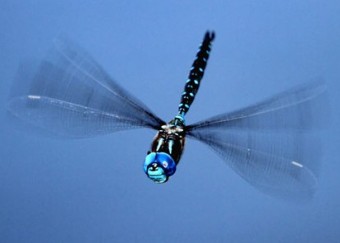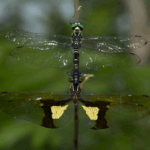Fastest Flying Insect is the Dragonfly
The Fastest Flying Insect: Dragonflies are known to travel at the speed of 35 miles an hour.
I read the dragonfly can travel over 50 mph. How are they able to achieve such speeds?
There is a very strong variation in the effects of wind density as we move from the incredibly poor Dynamics that enable fixed wing prop driven flight in planes, to that of insects. Then, the power to weight ratios are interesting, while A fighter jet will go 30 times as fast, still the power to weight ratios remain too close for comfort.
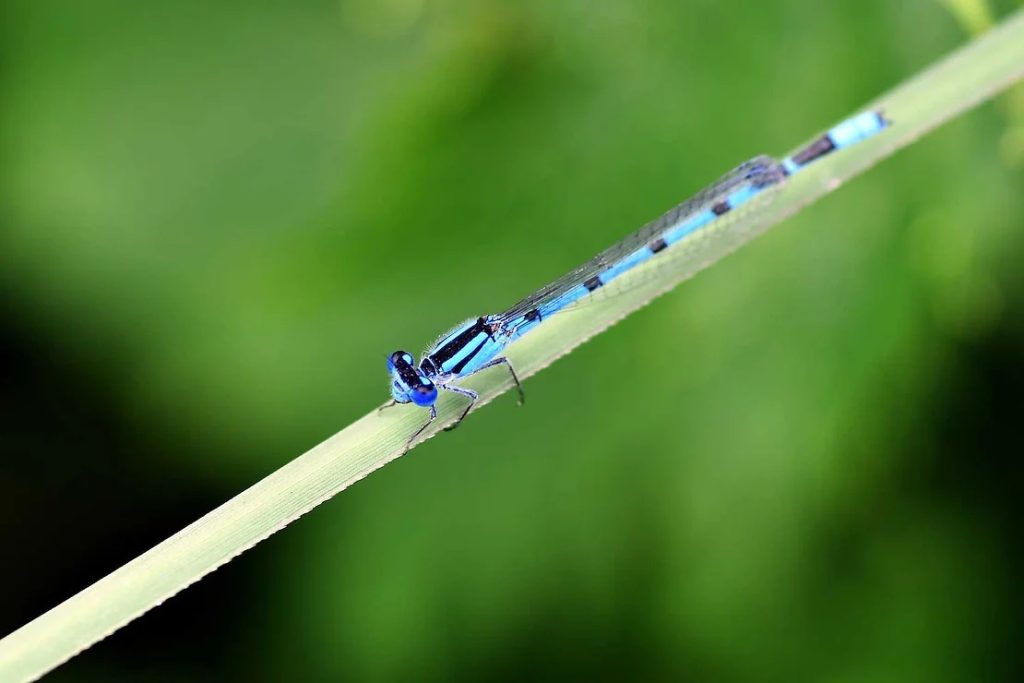
The dragon fly is also staggeringly fuel efficient,from many dozens, to hundreds of times as efficient as anything that we put in the air. Imagine an aircraft grade fuel refinery built into a plane. The insect wing is not heavy for it’s size and surface area, it is also extremely strong and is moved at rates, and in ways that would destroy modern blade propulsion in seconds. But best of all, it’s flexible and works according to built in, consciously driven, muscle managing software.
The wing surface attitude and pitch are modified many times each second to maintain the greatest possible pressure and in this,The most efficient application of force. The importance, and value in this is well exhibited in baseball. As the slightest variation in a bat’s connection when hitting a ball can mean the difference between a foul that goes all of ten feet up and despite a massive expenditure of energy is basically directionless, and a ball that leaves the park in seconds.
Dragonflies. They inspire tranquility and conjure warm, summer evenings by the lake. These beneficial creatures feast on pests such as mosquitoes, making your outdoor time a little more pleasant. Their abilities to fly fast and to hover are crucial to their survival — helping them catch prey and to dodge predators.
Flying Directions
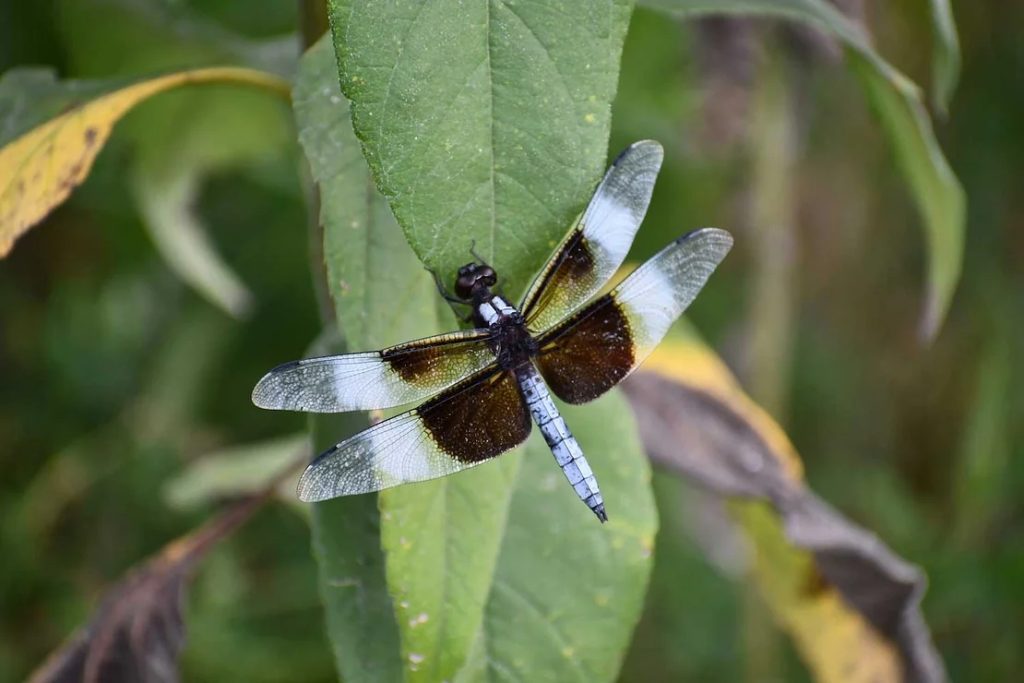
Dragonflies can do something many insects and other flying creatures such as most birds cannot: They can fly forward, backward, straight up or in a zigzag pattern. They fly fastest when moving straight forward, but the unpredictable movements of going backward and zigzagging catch prey and predators off guard, even if the speed is slower. Dragonflies also are able to hover, using their wing speed to hold them in place in the air.
Forward
Dragonflies can dart forward in the blink of an eye. They move about 100 body lengths per second, which is equivalent to about 30 to 35 mph. These large insects have four wings and wingspans up to 5 inches. Instead of simply flapping up and down, dragonflies twist their wings slightly as they push them down, creating miniature whirlwinds that give them additional lift.
Backward
Although they can fly backward, it’s not their strongest method of transportation. Instead of 100 body lengths per second, dragonflies accomplish only about three body lengths per second moving backward. The rear set of wings tends to be larger than the front set. This helps propel the dragonflies forward, but it means they can’t fly backward quite as fast.
Fastest flying insect
According to Smithsonian, “the fastest flying Insect is the Dragonfly which are known to travel at the speed of 35 miles an hour. Hawk Moths, which have been clocked at a speed of 33.7 miles an hour, come in second. Dragonflies can travel at 100 body-lengths per second in forward flight, and three lengths per second backwards. The dragonfly is the longest distance traveler / flyer in the world. The longest distance that this species can fly is up to 11,000 miles (almost 18,000 kilometers)”. Dragonflies are hunters and they prey on other flying insects. They use their speed and agility to help them catch their meal in midair.
DRAGONFLIES CAN FLY UP TO 60 MPH (97 KM/H)
Today I found out that the dragonfly can fly up to 60 miles per hour, which makes it the fastest insect on the planet.
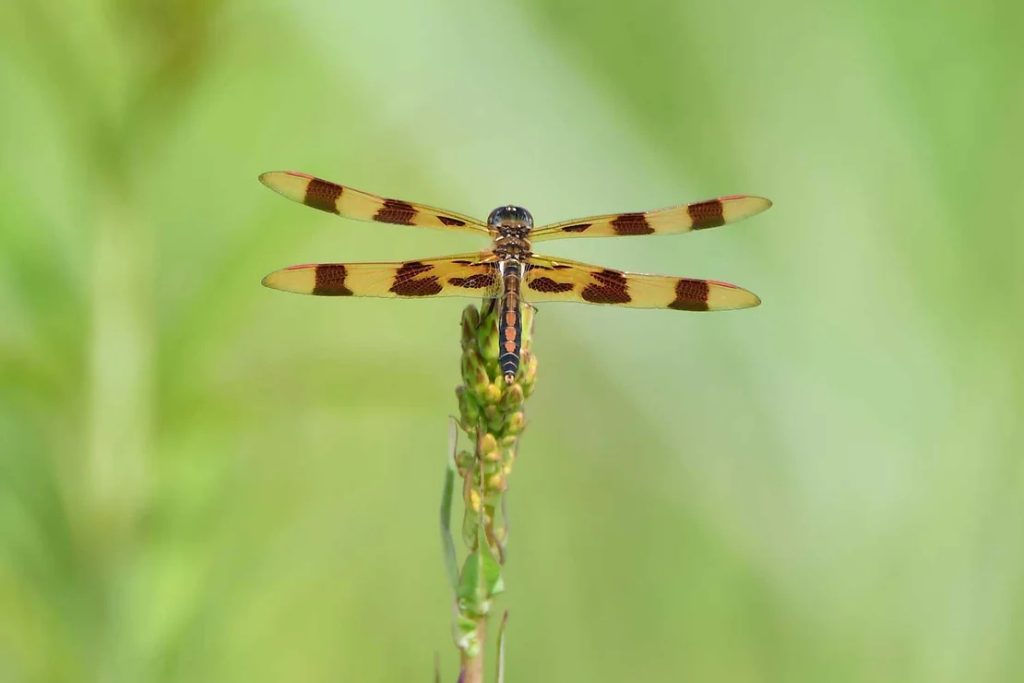
Interestingly, dragonflies only have their wings for about 3 to 4 weeks of their lifespan. Dragonflies lay their eggs in small ponds or other bodies of water and spend most of their lives in the larva stage (up to 3 years, depending on the species). It’s not until they go through a metamorphosis process that they grow wings. So when you see a dragonfly with wings, you know his days are numbered.
As young dragonflies, they feature a special appendage on their heads that they use to spear small fish or larva, making them predatory insects practically from birth. In the adult stage, (or winged stage), when you see two dragonflies chasing each other, it’s often two males, as the males are known to be territorial. When you see two dragonflies stuck together while flying… Well that one is pretty obvious, let’s just say, love is in the air.
Being an insect that can fly 60 miles per hour (97 km/hr) and being able to see 360 degrees at all times, there aren’t a lot of natural predators around that can catch the dragonfly; however, there are some. Among those are frogs, which use a quick flick of their tongue to catch the tasty protein filled snack. Many types of frogs can flip their tongues out and back in less than 15/100ths of a second, which is faster than most eyes in nature can follow movement, let alone escape from.
If you’ve ever tried to trap a flying insect in your home, you know how fast they can move. Some insects zip through the air at speeds greater than 30 miles per hour and perform amazing acrobatics in the process.
About the Dragonfly
Dragonflies are most commonly found near ponds and lakes. They can also be found hovering near black top parking lots at times, as they may mistake these reflective surfaces for a body of water.
According to entomologists at the Smithsonian Institution, dragonflies are believed to have been around for 300 million years and were among the first winged creatures to evolve. North American dragonflies vary by region, but species such as the blue-eyed darner are active from coast-to-coast. Dragonflies can also be found on every continent except Antarctica.
What makes dragonflies such fantastic fliers?
The dragonfly is speedy due to its unique body and wing structure. These qualities allow it to accelerate in ways that other insects cannot. Here are some other interesting facts you may not know about the world’s fastest flying insect:
Like an airplane, dragonflies are designed for smooth flight. Their long and tapered bodies channel air over and under the wings and abdomen to minimize drag.
While most insects have fixed wings that move together in motion, dragonflies sport wings that they can independently move up and down or forward and back.

Dragonflies can fly in any direction they choose, even backward or upside down. They can also execute hairpin turns at full speed and in slow motion, or even hover like a helicopter.
How do dragonflies use their speed?
Dragonflies are hunters. They prey on other flying insects and use their speed and agility to help them catch their dinner in midair.
A research study conducted by Harvard University and the National Science Foundation used high-speed cameras to record dragonfly habits. In the study, dragonflies caught 90 percent of the fruit flies they targeted, quickly trapping each one with their feet. After a catch, dragonflies flip their bodies upside down and usually consume the prey while still in flight.
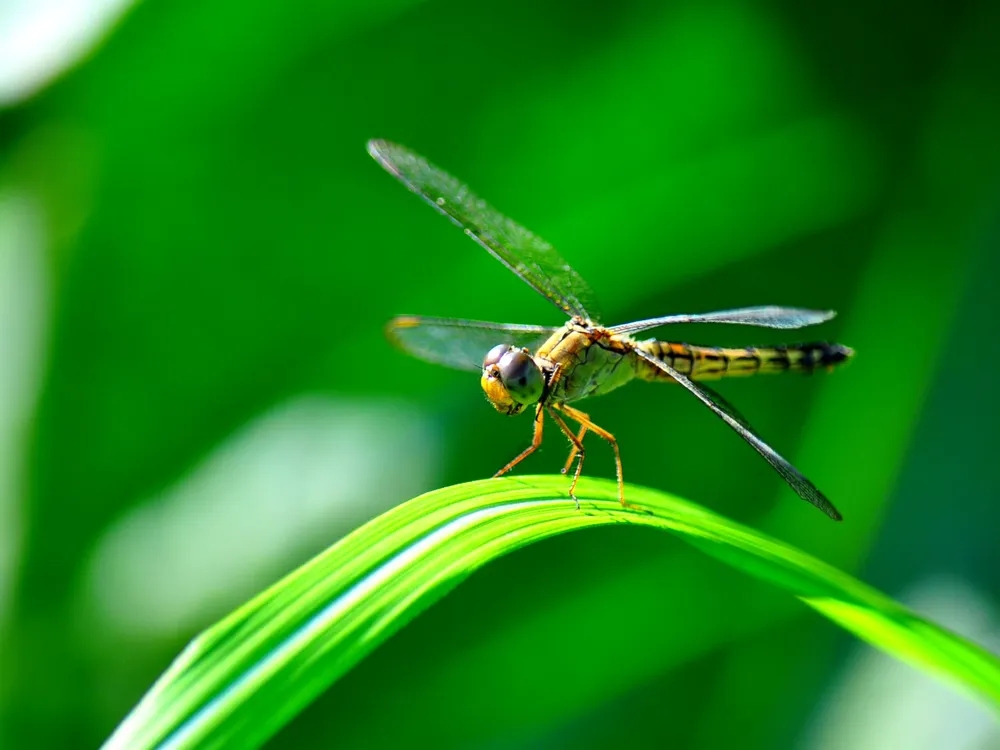
Are dragonflies helpful or harmful?
Dragonflies are not harmful to humans. In fact, dragonflies are a great asset during the spring and summer months when mosquitoes are most active. A single dragonfly can consume hundreds of mosquitoes a day. These fast flying insects can make excellent guests at your next lakeside party or picnic.
So next time you see a dragonfly, don’t flinch. Just sit back and enjoy its grace and speed.

